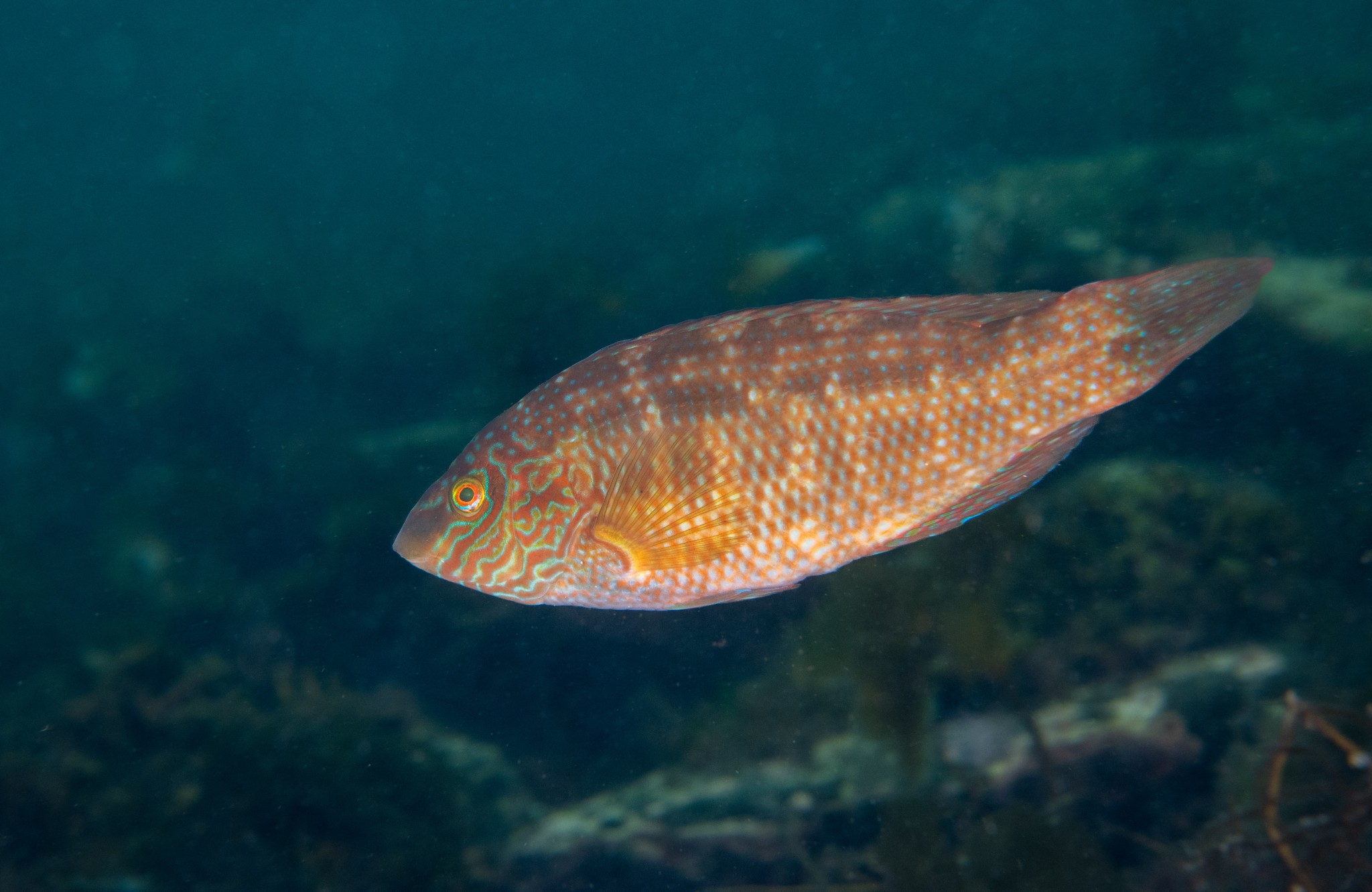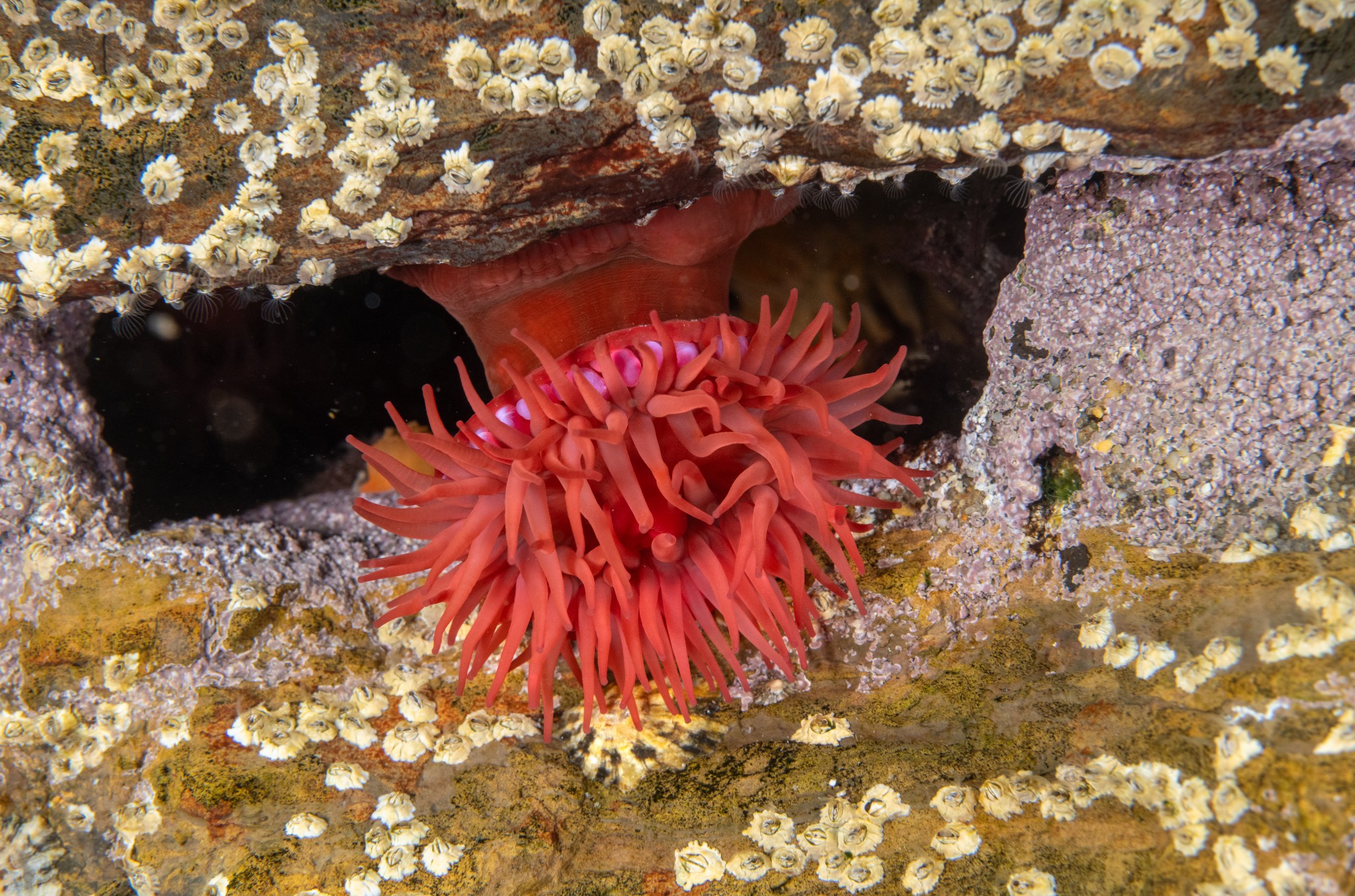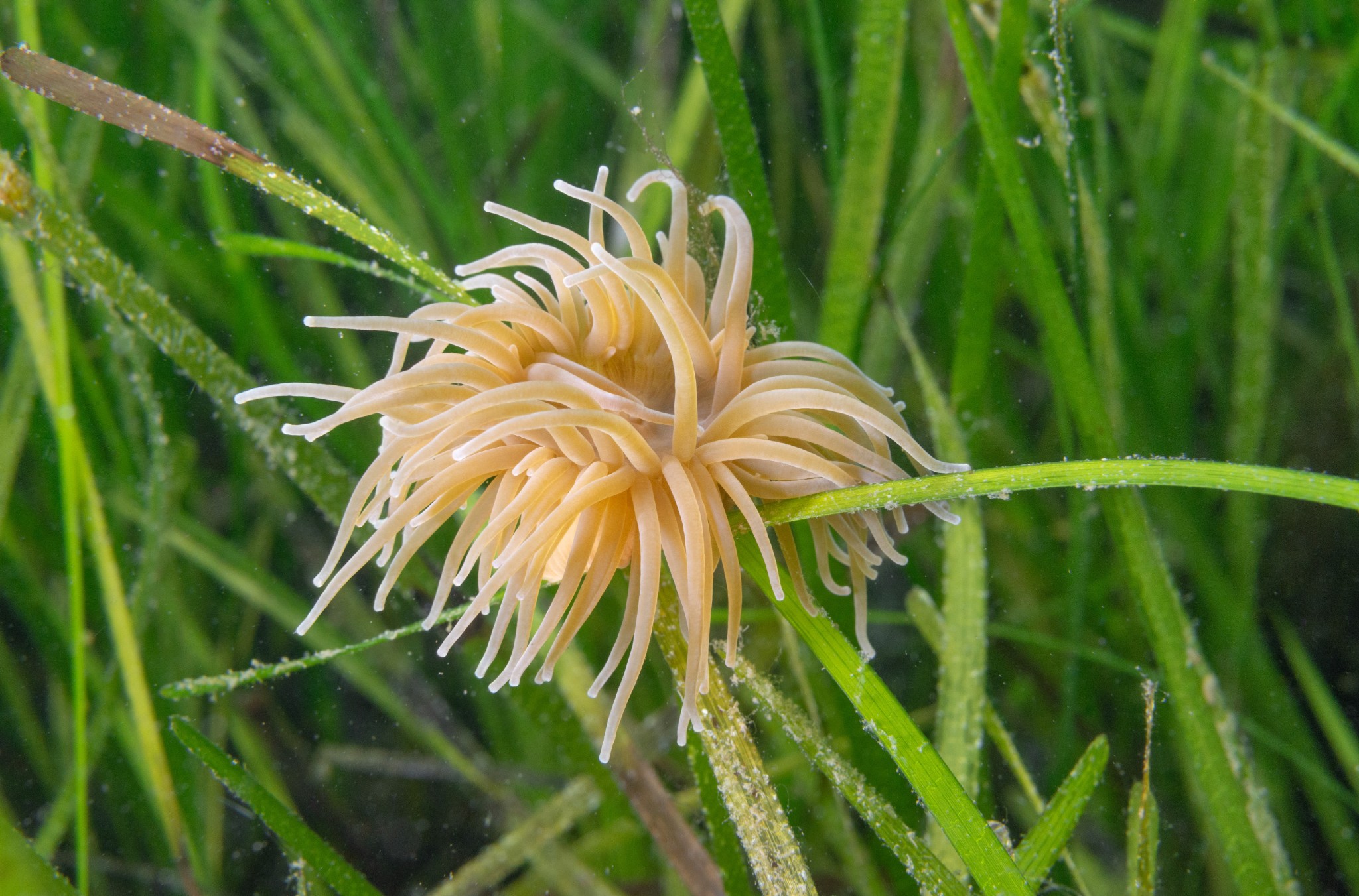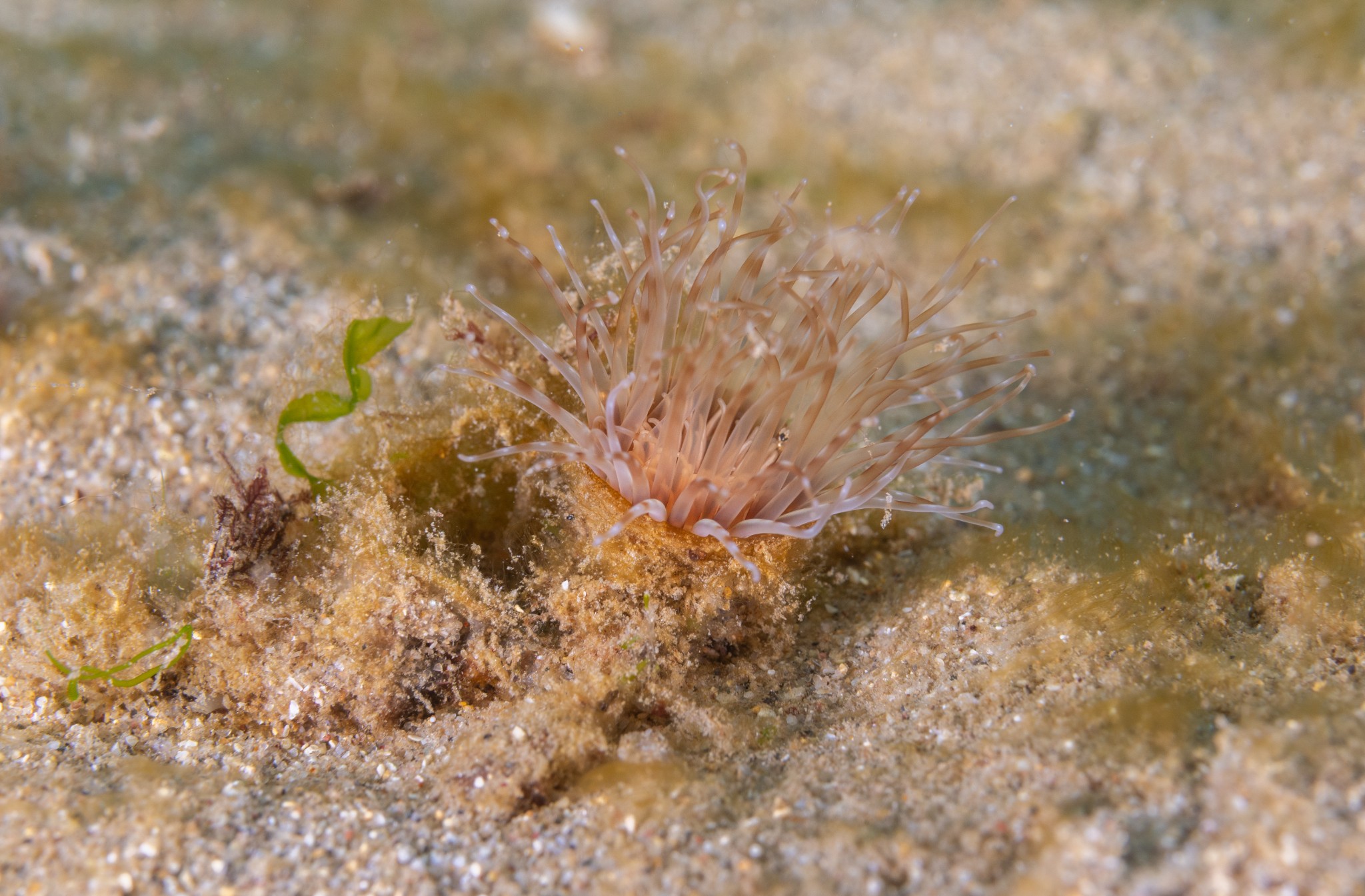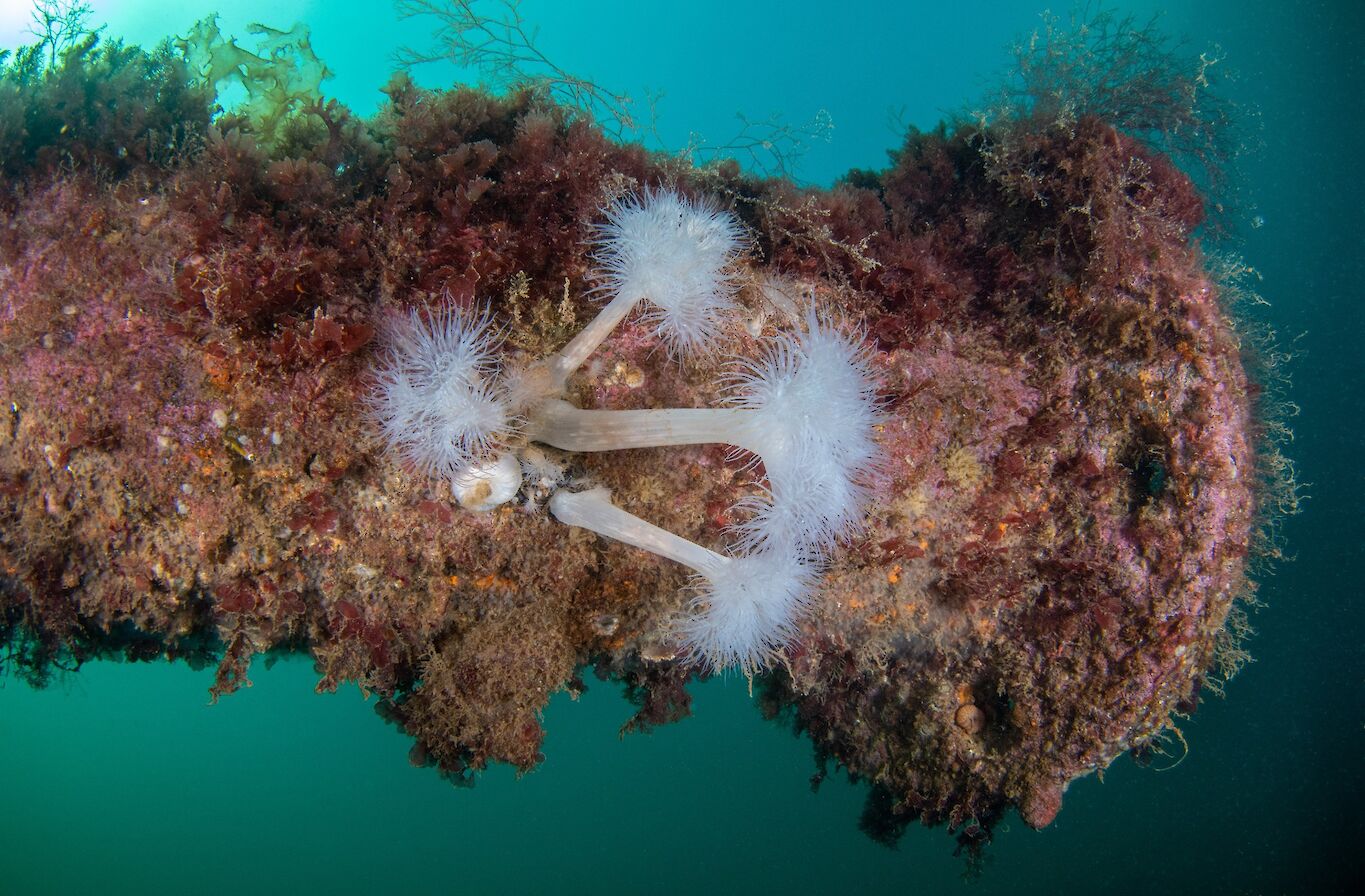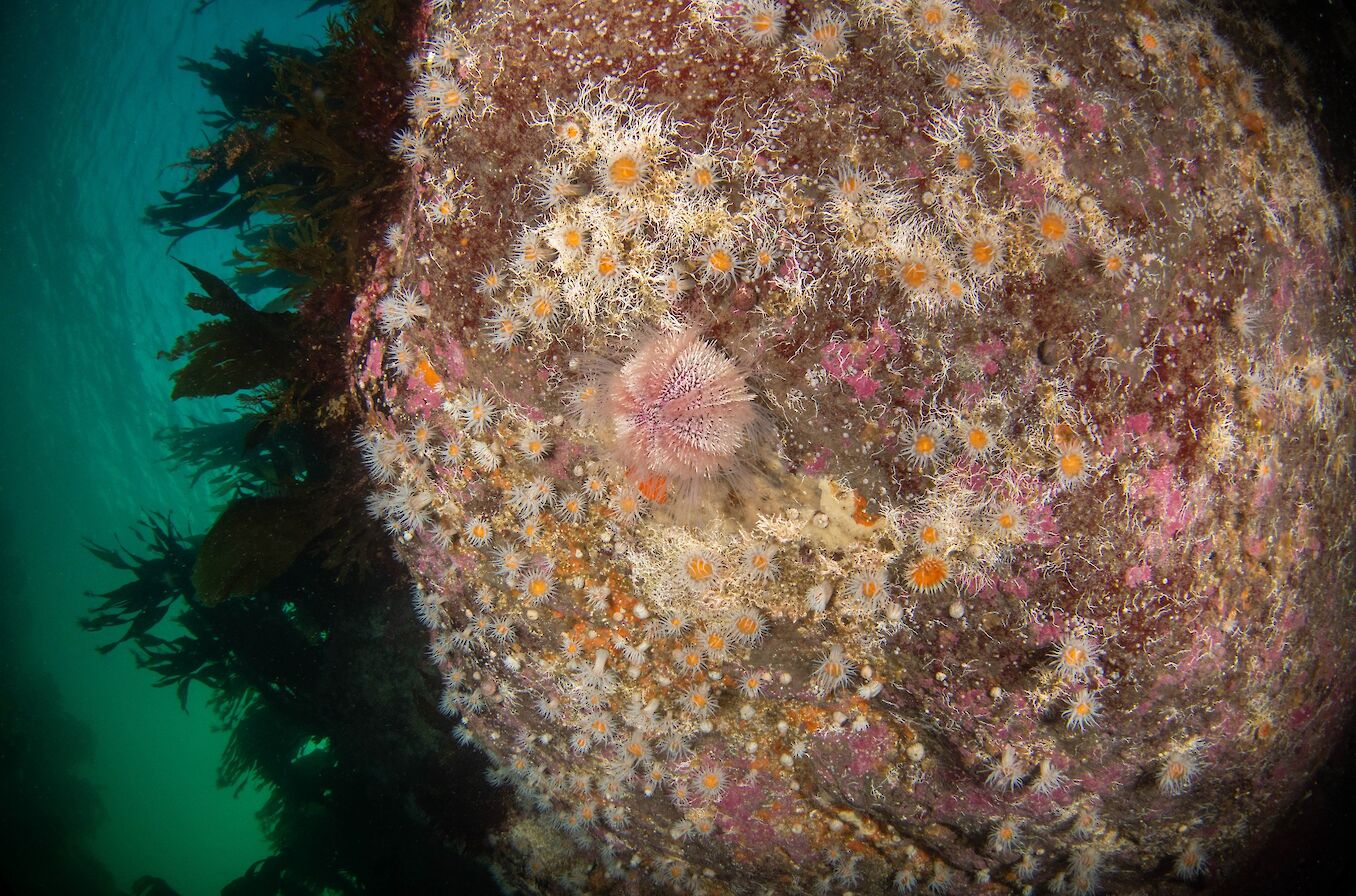One of my main interests has always been birds and whilst people from all over the world also have a strong interest in ornithology, I do remember a fellow wildlife film maker from the United States commenting once ‘man, you Brits sure do like birds!’. So, for me, September is a little problematic as it’s generally a quieter time of year.
All is not lost however.
Being an islander it’s the shore I’ve always been drawn to, and not only to see birds. I remember from an early age wanting to get in the sea to see what creatures I could find. If you were in my year at Kirkwall Grammar School and also had a passing interest in the marine environment then it’s unlikely that you would have been able to access a book from the library that covered the subject.
I’m sure the stamps from 1990 onwards me in the copy of ‘The Young Specialist looks at…Marine Life’ can be entirely contributed to me. I have my own copy of the book and the animal to be found on the cover, a beadlet anemone, seems a fitting topic for this month’s article.
The beadlet anemone is the anemone we are most likely to encounter whilst rock pooling at low tide and more often than not it appears as a dark red blob stuck to the crevices between rocks. I wanted to see them in a better light however and so donned my wetsuit and swam into a shallow part of Scapa Flow.
My first encounter however wasn’t with an anemone but with a corkwing wrasse. The water is warm(ish) and I watch as several corkwing wrasse dart around chasing each other, most of which appear to be females.
Wrasse are naturally curious and I know that If I just swim slowly and be patient then the beautifully coloured male corkwing wrasse feeding nearby might allow me a closer approach. Getting pictures of fish swimming in the middle section of the water however isn’t easy and I make many failed attempts as it moves quickly by.
The way some wrasse swim is described as ‘rowing’, where it keeps its body fairly stiff and uses its pectoral fin for propulsion in a rowing motion. Of all the wrasse species the corkwing tends to be the most variable in terms of colour and can sometimes be confused with other species of wrasse. However, it has a characteristic spot in the centre of its tail stalk to help identify it.
Females are mostly mottled browns and greens but the male can be brightly coloured, with the individual I photographed having beautiful iridescent turquoise and red patterns on its head and flashes of kingfisher blue on its anal fin.
Males are territorial and build an elaborate mound-like nest of algae. He entices one or more females to lay eggs inside the nest and then guards and fans the eggs until they hatch. Rival males are chased off but some males also have female colouration and can succeed in entering the nest where they try to fertilise the eggs.
I leave the wrasse to their neighbourhood quarrels and try and find some beadlet anemones. I don’t have to look too hard as they are plentiful along the rock wall, the vast majority no longer red blobs but a beautiful vibrant red colour with their tentacles swaying in the gentle swell.
Anemones can be found from rock pools to the deepest depths, and in all habitats from rocky reefs to soft mud. In terms of body structure all anemones have a hollow cylindrical body known as a column. It may have a basal disc which adheres to hard surfaces or alternatively it may burrow directly into soft sediments. The upper end of the column flattens into an oral disc which has a slitlike mouth at its centre and is surrounded by a number of tentacles. All sea anemones possess stinging cells called cnidae which are used for both feeding and defence.
The beadlet anemone is one of the most common anemones to be found in the shallows and intertidal pools. They’re usually bright red with a smooth column of the same colour.
The name ‘beadlet’ is taken from the ring of usually bright blue ‘acrorhagi’ around the rim of the column. As pretty as they look, they are actually hollow warts filled with stinging cells and thus can have an aggressive function! Unlike many other anemones, beadlet anemones do not reproduce asexually but instead reproduce viviparously, producing fully formed young individuals which are born through the anemones mouth.
Amongst the treasures to be found in rock pools anemones are always a highlight, but I’ve seen many different many species in Orkney so I’ve gone back through my archives to share some highlights.
Snakelock anemones have a mass of long, waving tentacles said to resemble the serpentine hair of the mythical medusa. I’ve only ever seen them in the sheltered seagrasss meadows at Grimbister where they are a rather plain beige colour and the individuals quite small. Karen Boswarva, the Seasearch coordinator for Orkney, has seen individuals in the waters off South Walls that are greener in colour with purple tips to the tentacles which signifies the presence of a symbiotic algae. Unlike their beadlet relatives they cannot retract their tentacles.
An anemone found in a different habitat altogether is the burrowing anemone which, as the name suggests, can be found buried in sand or mud. The anemone can move within the tube, which has a smooth and slippery lining enabling it to retract rapidly when disturbed. The most common of the tube anemones, it has up to 70 marginal tentacles which can be very variable in colour.
Another anemone you can often find living in sediments is the dahlia anemone. It’s fairly large, growing up to 20cm across, but it is also rather short and stout and can often be seen with shell or sand fragments attached to it. The colour is very variable and the short tentacles often banded. Lateral fission has been observed in this species meaning that the anemone literally splits itself in two to make a second anemone. Slow-growing and long-lived, you can find it anywhere from stable gravel to rocks to wave-exposed gullies.
In the complete opposite to the sheltered water of the first Churchill Barrier you can find the white-striped anemone in the high energy environment of Orkney's western shore. It likes water movement and can tolerate turbulent conditions which it would certainly encounter in the location I photographed it, at Skiba Geo in Birsay. This beautiful anemone has two main colour forms where the disc and tentacles are both white, and another which I photographed in Birsay has a pale orange disc. Like the dahlia anemone the white-striped anemone reproduces asexually by lateral fission.
Lastly the plumose anemone is one which will be very familiar to divers. These are large anemones and can occur in high numbers, especially when covering wreckage, but can also be found on rocks and jetty pilings. When ‘active’ it has a tall, smooth column topped by feathery-looking tentacles, but despite its size the tentacles are rather delicate and can only catch small prey. The plumose anemone can change from being an erect anemone at up to 30cm tall to a deflated-looking blob by decreasing its internal hydrostatic pressure. It does this by directing a current of water into its body cavity thereby inflating or deflating itself.
You just have to take a dip to find a family of endlessly fascinating creatures!
Raymond is a wildlife filmmaker who also offers bespoke Orkney wildlife tours and one-to-one wildlife photography tuition. Find out more via his official website. You can also find him on Facebook, Twitter and Instagram.
